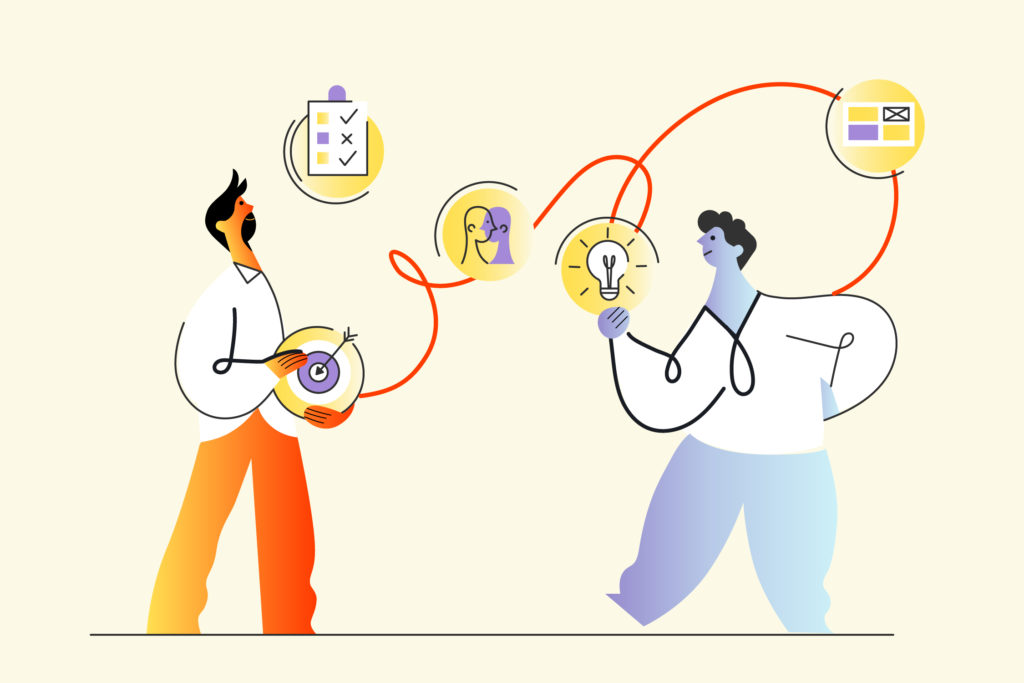The Benefits Of Design Thinking Process For Innovation

Design Thinking is a means of thinking that helps to create creative ideas and innovative solutions to problems. It involves an analytical research process that begins with understanding the problem statement, followed by focusing on different perspectives, contexts, and problems. This process then allows for creative solutions to be generated through the core focus of design thinking. Design Thinking encourages divergent thinking which leads to more innovative outcomes as it allows for different solutions to be generated from diverse perspectives and contexts. Additionally, its emphasis on creativity encourages individuals to think outside the box when tackling any problem statement or challenge set before them.
Design thinking brings out the creative element in employees, which helps to encourage business growth and innovation. This process encourages an iterative approach to problem solutions, whereby feedback surveys are regularly taken from real users of the product or service to ensure that it is meeting their needs. Business owners can then take this information into account when developing solutions for businesses looking for cost-effective solutions. By allowing employees to embrace their creativity without fear of judgement or failure, design thinking serves as a powerful tool in encouraging innovation within businesses. Furthermore, it allows business owners to identify problems and create solutions that users will be more likely to adopt due its user-centric approach.
Design thinking is an iterative process that helps identify creative ideas and then refining those solutions to create innovative solutions. The process starts with understanding users’ needs and then exploring alternative strategies through a prototype model. Then, the idea can be tested on different user groups in order to gain a deep understanding of their problems. This allows business owners to refine the prototype while gaining insights from different perspectives. As a result, design thinking gives businesses several opportunities for creative problem solving by providing them with data-driven insights into their users’ needs. By using this approach, businesses can develop new products or services that will meet their users’ needs more effectively than traditional methods of innovation. Therefore, design thinking is an invaluable tool for creating innovative solutions which provide better experiences for customers and add value to businesses in the long term.
The design thinking process involves a collaborative team effort to design products and services which meet real user problems. It encourages productive sharing of new ideas and new ways of solving problems. It also helps to foster a culture of innovation by creating diverse teams that focus on understanding the customer’s needs and developing creative solutions.

The goal is to create better, more useful products or services for customers, as well as to solve problems in an efficient manner. Design thinking can be used for any kind of problem-solving, from the most basic to the most complex. It provides a framework for using creative techniques such as brainstorming and prototyping in order to develop innovative solutions. By changing the mindset from “doing things right” to “doing the right things” businesses can benefit from this process in many ways including cost savings, improved customer experiences, increased revenues, and higher levels of employee development and satisfaction. Design thinking is not just about coming up with new ideas or creating something unique; it is about problem solving with empathy at its core – understanding your users’ needs so that you can create better outcomes for them while also achieving business objectives.
Designers’ work processes involve a number of steps to take an idea from concept to reality. This includes researching the problem, brainstorming and generating ideas, testing solutions with users, and refining the final design. It is an innovative way of thinking that can be used by small businesses as well as global companies. The benefits of the design thinking process for innovation are numerous. By taking a creative approach to solving problems and understanding user needs, businesses can create better products or services that meet their customers’ demands. Additionally, it allows them to save both time and money in development by avoiding costly mistakes caused by inappropriate solutions or designs. Furthermore, it helps companies gain new insights into customer behaviour so they can quickly respond to changing market trends or preferences with appropriate solutions tailored precisely for their target audience.
Design thinking shifts the focus from engineering a solution to understanding the problem and finding creative ways to solve it. With a design-centric approach, businesses can create innovative solutions that meet customer needs while also driving growth and innovation.
The Design Thinking Process is an invaluable tool for any enterprise looking to increase their innovation capabilities. A multidisciplinary team of business strategists, technology adopters, engineers, and creative professionals collaborate together to develop a comprehensive thinking framework that will help them identify problems and come up with solutions tailored precisely for their customers. Companies can use this process as a starting point for any new project or initiative they are considering in order to ensure that all aspects are taken into account before moving forward with implementation. This helps them achieve greater success by providing them with an accurate picture of how their proposed solution will perform in real life scenarios.
In conclusion, the Design Thinking Process offers many benefits for businesses looking to innovate and drive growth within their organisation. By allowing teams from various disciplines to collaborate on projects from the very beginning stages, companies can quickly identify potential problems and craft solutions tailored precisely for their target audience while also gaining valuable insights into customer behaviour which can be used in future initiatives or projects.. Additionally, utilising this process allows companies to make more informed decisions around technology adoption or engineering solutions as they have already identified potential risks before making any major commitments.





